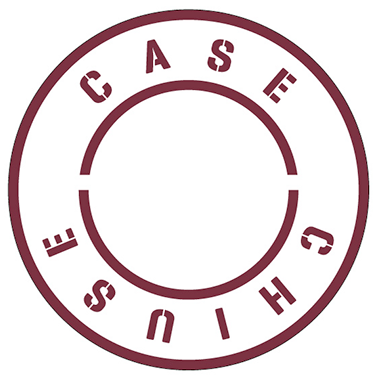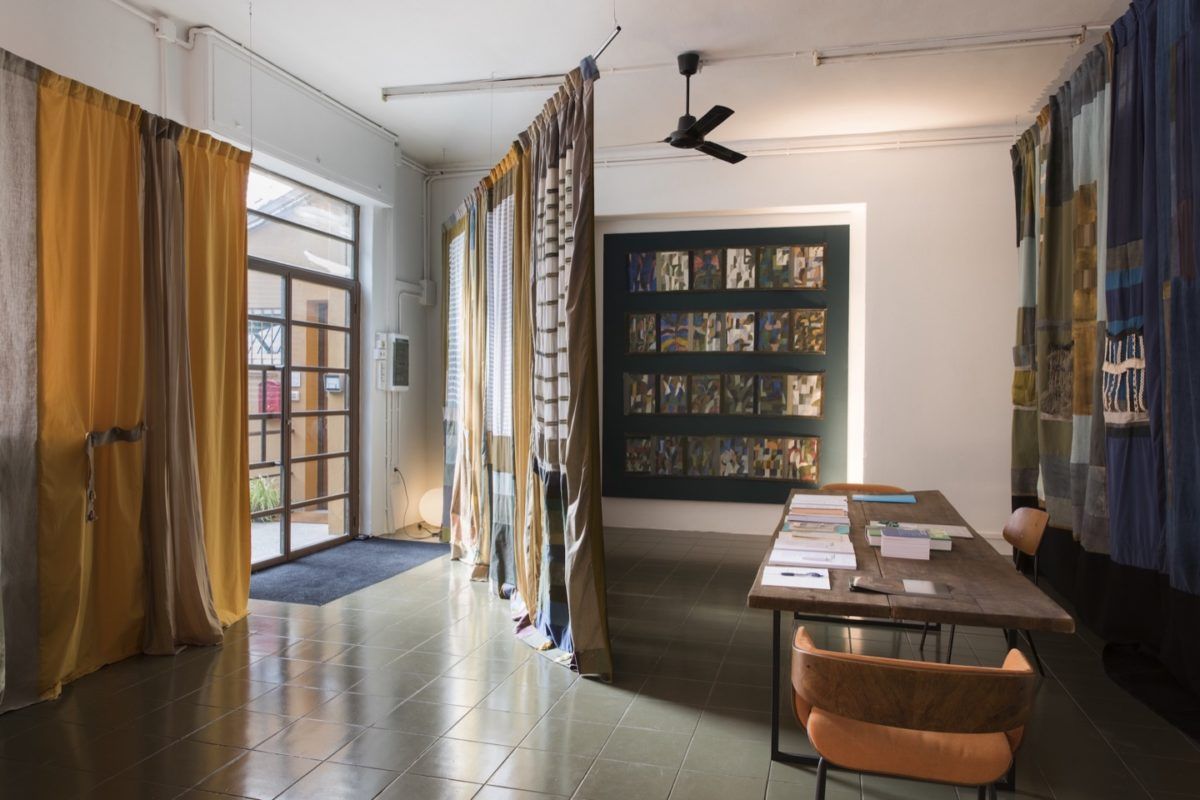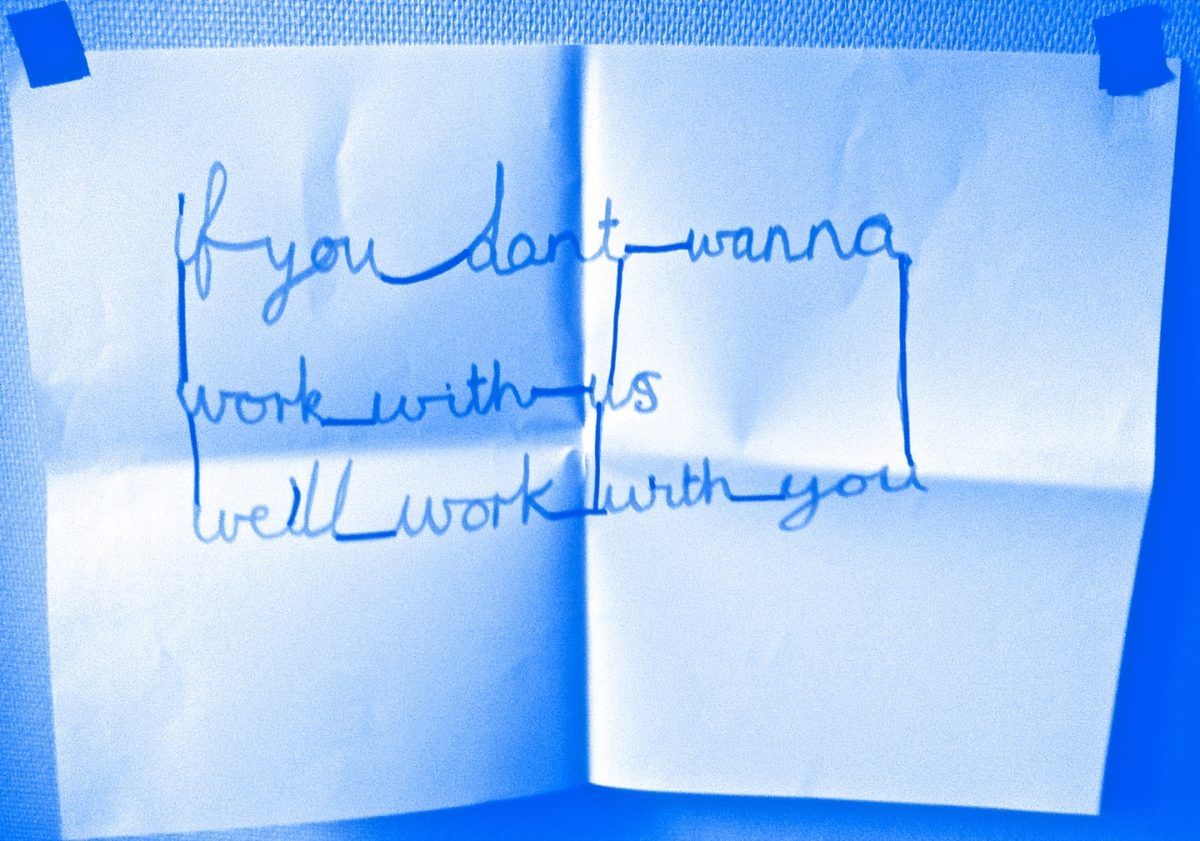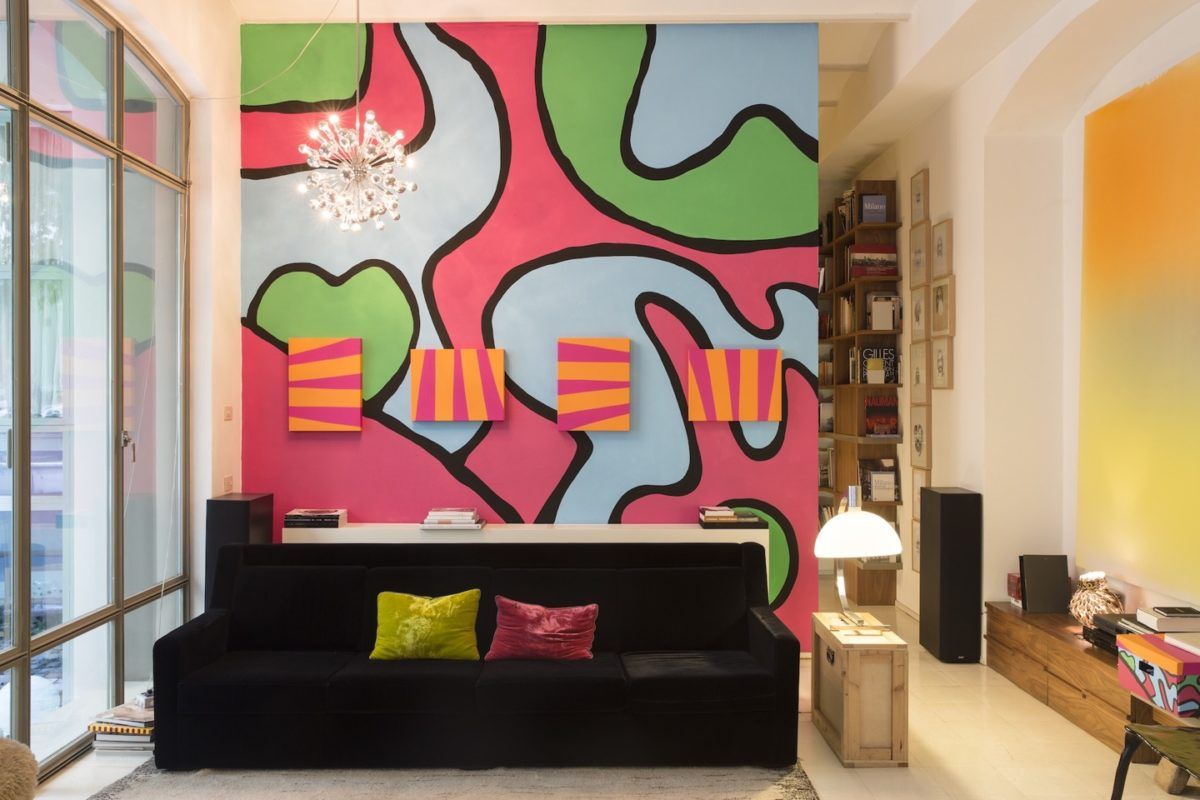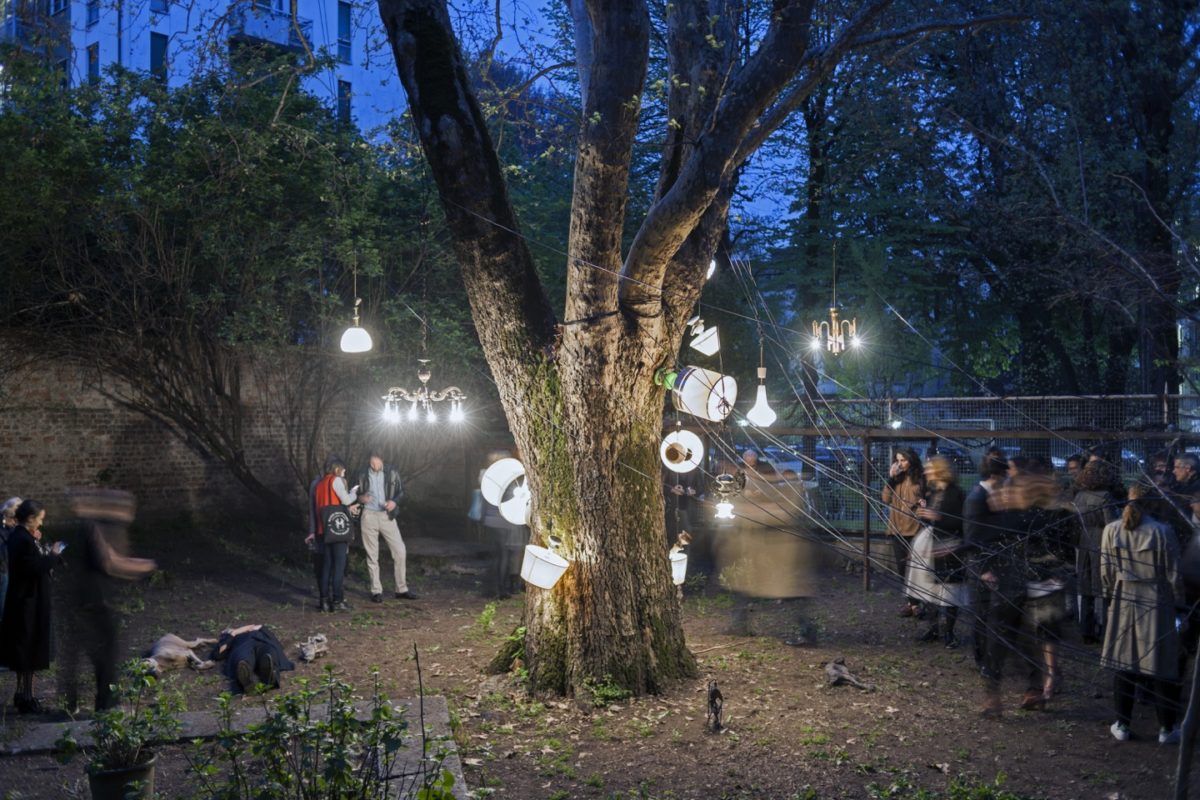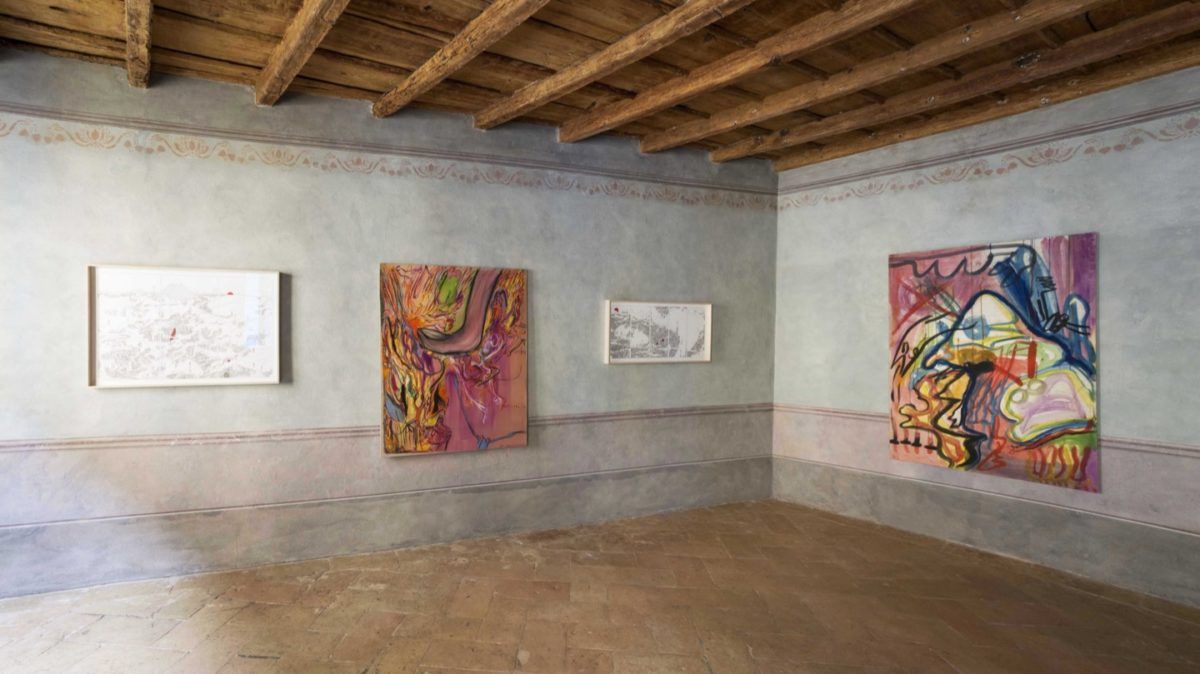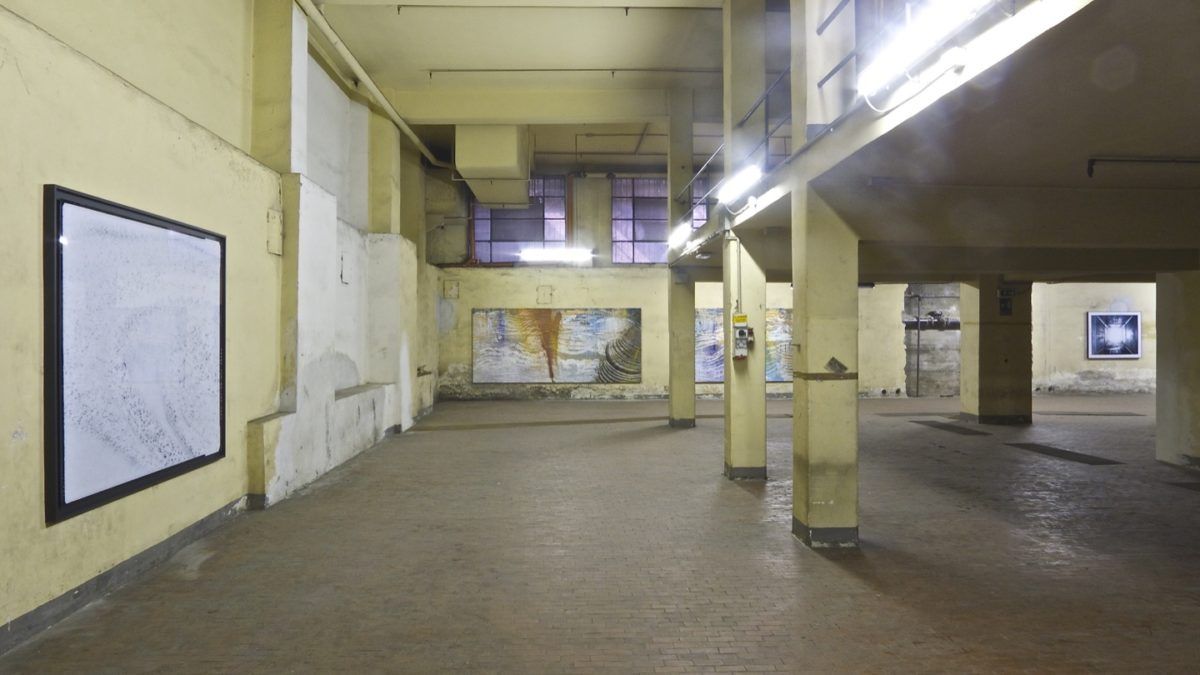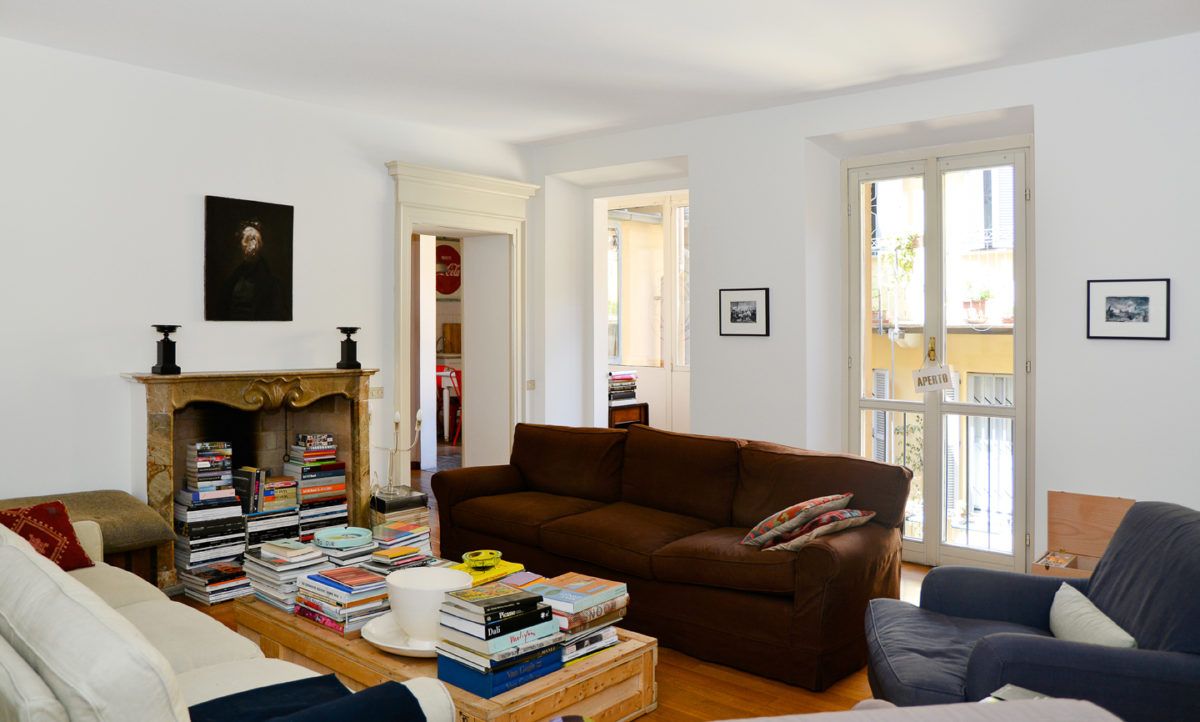I’ve always liked to think that the work of Carla Accardi was a subtle and affectionate shakeup of the male domination of modernist conventions. That her secret mission was to corrupt with great elegance, to push back the boundaries of painting beyond decoration, to tear it off the wall and turn it into a new wall, a mural parade. And that all her research was a serious game with the limits of the picture, tagging and graffitiing the minimalist hoariness of the white cube with fluorescent joy, dismantling the devotion for the ‘room’ with imagery going gleefully beyond convention. Also in this sense, her stance was intensely political.
In perhaps a more extravagant manner, I’ve always imagined that Carla Accardi’s Tendewere expanded films. Only apparently fragile, and worldly filters on the world.
A film is a sentimental mechanism. Absolutely personal and essentially collective, a film motivates, excites, haunts, devastates and stitches together nomadic relationships that then fray, come undone, are woven together once more during every shooting session, only to then get lost and finally reform as archipelagos, taking shape only temporarily and elsewhere. What’s more, it embraces projections, phantoms and potential guests for unexpected cameos.
Despite being the only act of memory possible in all this inexorably communal process, the film inevitably becomes ever more opaque at every step, as if pursuing its own destiny to fall apart. Every time it is shown and made public, it is fatally consumed a little more.
In other words, an organ in which everything is connected, the networks of which extend far beyond itself and throughout time, like a nervous system without a specific body.
A film is a world.
Thus is the peculiar world of Tamara Henderson. And Seasons End: Out of Bodyher most splendid manifesto.
How may we describe it and which cinematographic tradition should it be ascribed to?
Diverse and distant landscape elements are exposed, animated and pursue one another on the basis of choreographies of tone, scent and sound.
But Seasons End: Out of Bodyis undoubtedly also the conclusion of an remarkable work cycle that has appeared in various forms and media (installations, sculptures, paintings, imposing garments, a performance that hides its shooting on a movie set unaware of being one, the film itself, …), in Glasgow, Los Angeles, London, Oaksville, London again and lastly Dublin. Yet this apparently eccentric journey through time and space is above all a homage, a splendid and haunting personal monument to life, death, healing and regeneration.
And so in the end it needs to be looked at, like a rite in which wind, sea, ice vapour, sky, moon, sand, rocks, land, lichens, trilobites, figs, algae, toads, cacti, flowers, scarecrows, creatures, animals, and body parts seem to appear one after another following a free personal score, one that is associative and perhaps diaristic, but which in actual fact is carefully put together.
Despite the fact that it’s possible to see it dance in the long trail of a kind of cinema of surrealist extraction and gently forced by artists such as Maya Deren, Marie Menken, Jack Smith and Joan Jonas, Seasons End: Out of Bodyis an absolutely unique work which intertwines profoundly in the wide-reaching practices of Tamara Henderson.
This is discovered by crossing an initial environment hosting drawings, paintings and four curtains by Tamara Henderson herself, as well as a sophisticated cameo by Carla Accardi in the form of paintings.
Only by manually drawing open two curtains may we penetrate the secret cinema, illuminated by the mysterious animal parade of Seasons End: Out of Body.
In actual fact, the world is the same.
Be it one of paintings, of assemblages, of sculptures, of pieces of furniture, of fabrics or of films, Tamara’s world never gives up on itself, but rather it contracts and expands, reconfiguring itself time after time.
Undoubtedly, the automatic writing and a deep-rooted dialogue with the dreamy universe of surrealist extraction, just like the collage technique (many canvases are literally impregnated with natural elements or host objects of various origin), are certainly substantial.
But while drawing and poetry are Tamara’s founding arts, sewing seems to offer the reinvented knowledge that stiches together every element, bringing together cellulose film montage with the actual sewing of fabrics destined to be recombined in a vast range of personal forms, such as rolls of drawings that become canvases, canvases that take on the shape of clothes, paintings that are reinvented as curtains… as if the nonlinear extrusion from one work to another, from one element to another were the bizarre performative and generative principle that makes Tamara’s creative world go round.
And in this sense, the fragility of the film and the necessary obsolescence of the paintings ally with one another, in a dilated process of falling apart, of decay and obsolescence which, in actual fact, is nothing but radiant transformation and regeneration.
Seasons End: Out of Bodysounds like a title, a verse, a warning, but also like an exorcism.
Seasons End: Out of Body, out/Seasons Begin: Into the Body, in.
The ritual of transformation and alteration of state out of time may begin.
The invitation is to let oneself go and perceive, follow each image on canvas as if it were still impregnated with the sounds from which it comes. All around – canvases, paintings, curtains – it will start to feel like an unusual abstract expanded film.
The perception of time and that of the particular time of each element will play off one another.
The echo of the litany of Seasons End: Out of Bodymay start to sound out.
Ashes are the most gracious and haunting dancing element that unites earth, sea and sky.
Let us celebrate them.
Andrea Lissoni
